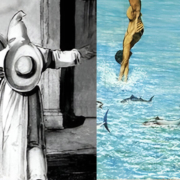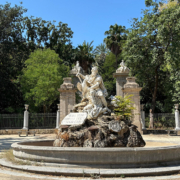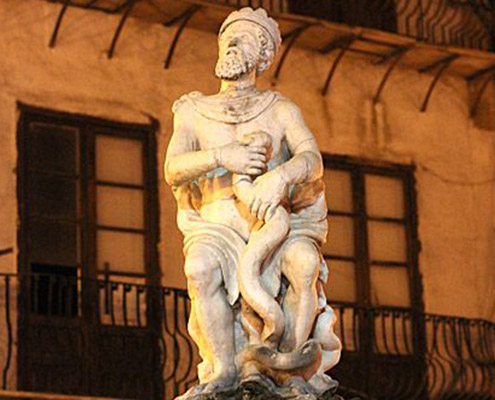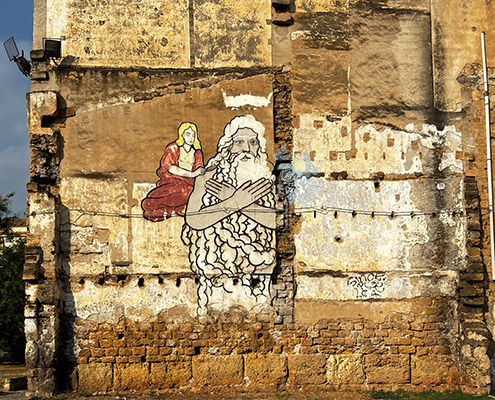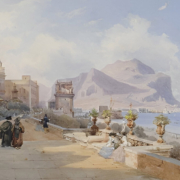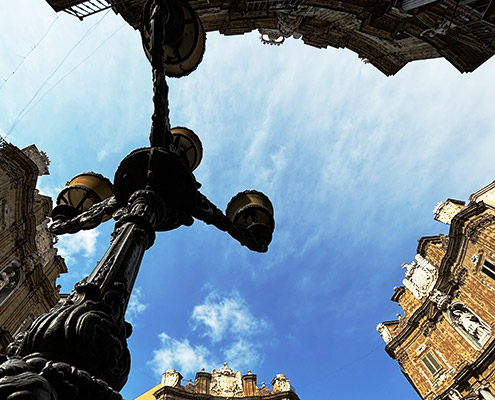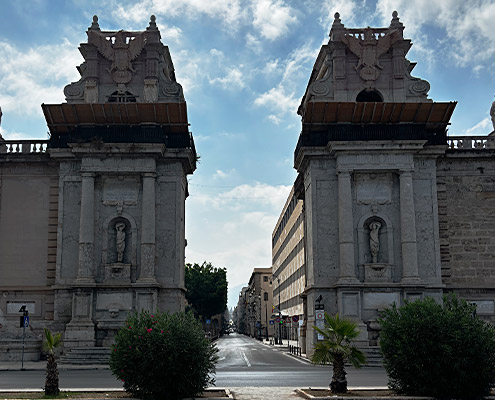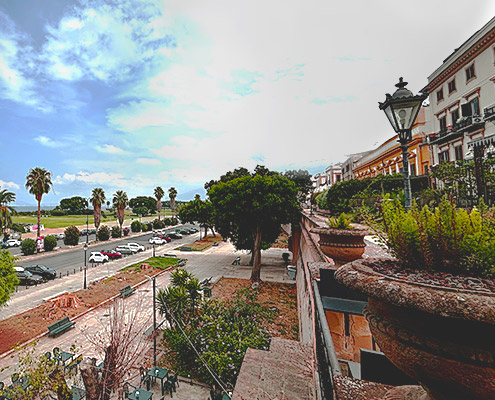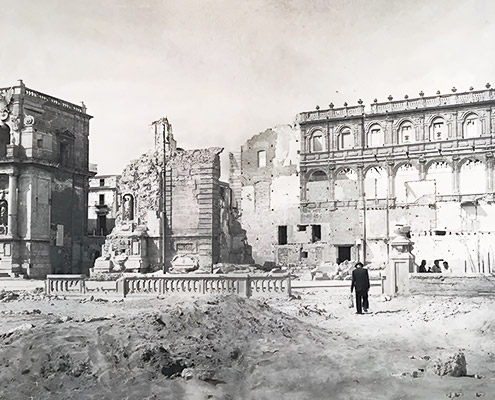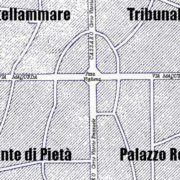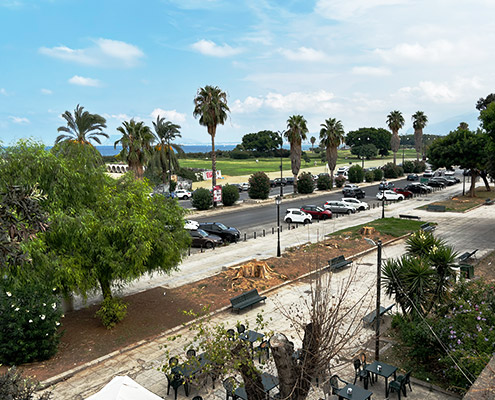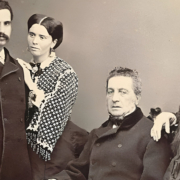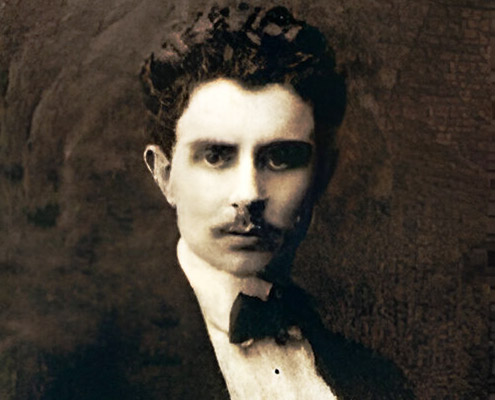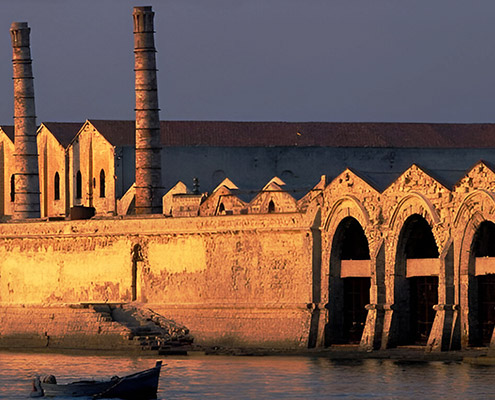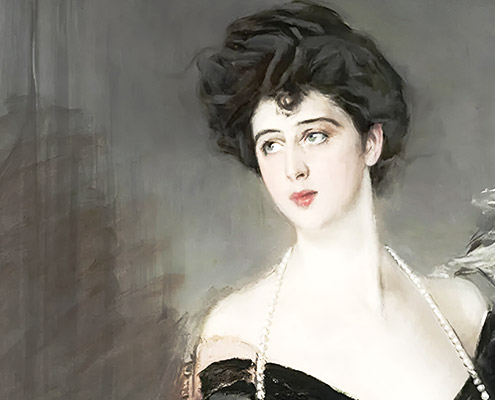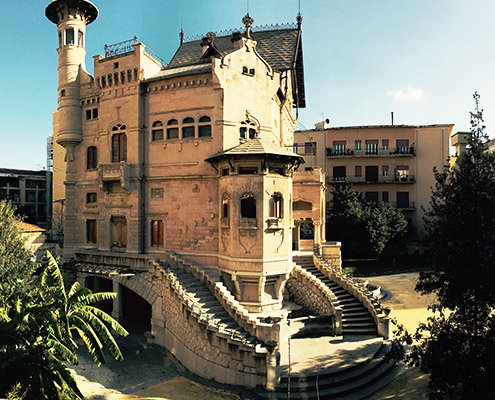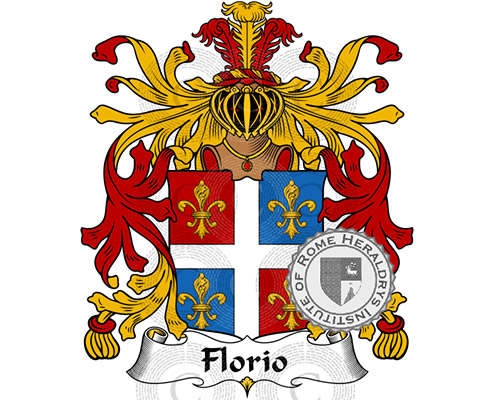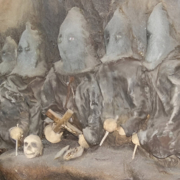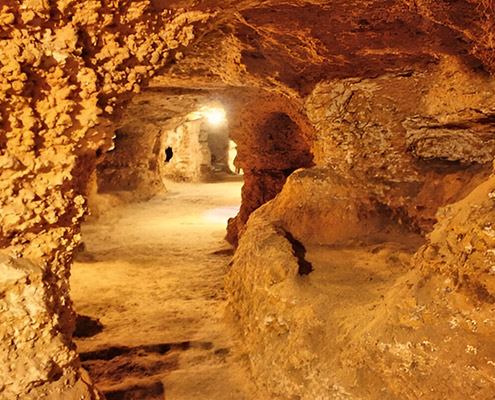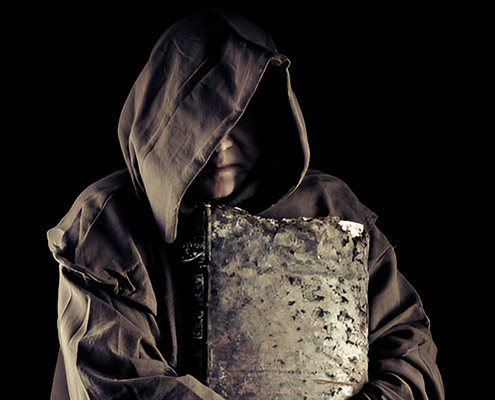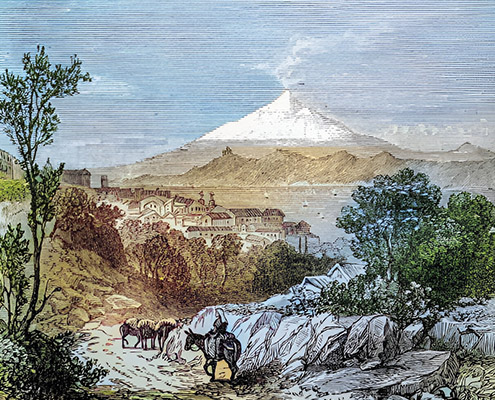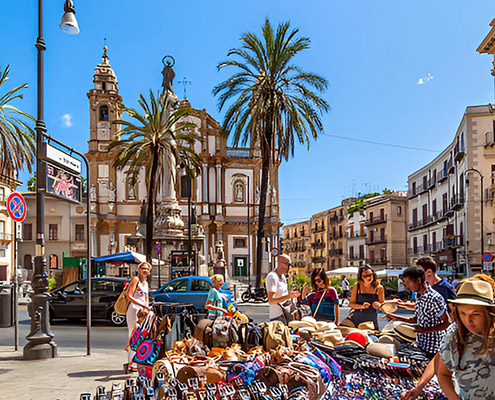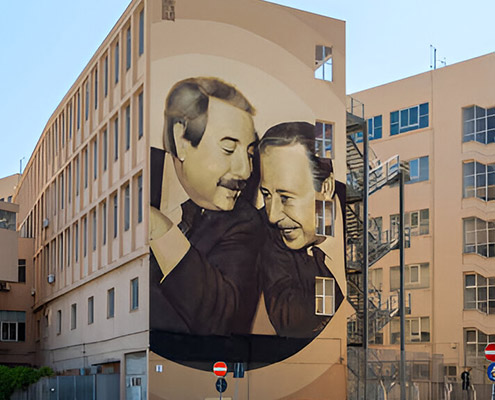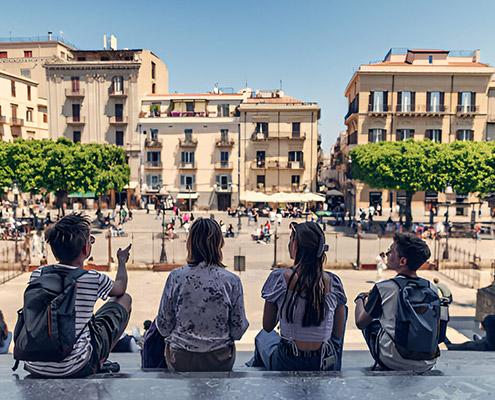Mysteries and Mythology of the City of a Thousand Faces
Palermo, with its long and complex history, is not just a city of art and culture, but also a place steeped in mysteries, legends, and symbolism that date back to ancient times. The streets and palaces of Palermo hold secrets and tales that blend reality and fantasy, creating an intangible heritage of fascinating and at times unsettling stories. In this article, we will explore some of the most mysterious and folkloric aspects of Palermo, from the mythology that surrounds the city to the controversial symbols that still define its identity today.
- The Beati Paoli: Palermo’s Secret Justice Society
- The Myth of Colapesce
- The Genius of Palermo: Secular and Mysterious Protector
- The Walls of the Cattive: Symbol of Segregation and Sorrow
- The Capuchin Catacombs: A Journey Among the Dead
- The Festino of Santa Rosalia: Between Devotion and Folklore
- The Mysteries of the Vucciria
1. The Beati Paoli: Palermo’s Secret Justice Society
One of the most mysterious elements of Palermo’s folklore is undoubtedly the legend of the Beati Paoli, a secret society that, according to tradition, operated in Palermo between the 17th and 18th centuries. This brotherhood, composed of masked men, is said to have met in the city’s underground tunnels, especially in the Capo district, to administer a form of summary justice against the powerful and corrupt who evaded official law.
According to the legend, the Beati Paoli were anonymous vigilantes acting in the shadows, often using underground passages and catacombs to move unseen. Their story is shrouded in mystery, fueled by Luigi Natoli’s novel “I Beati Paoli,” which transformed this sect into a symbol of popular resistance against oppression.
Today, the myth of the Beati Paoli continues to live in Palermo’s folklore, with stories blending reality and fiction, creating an aura of mystery around these masked vigilantes who once watched over the city.
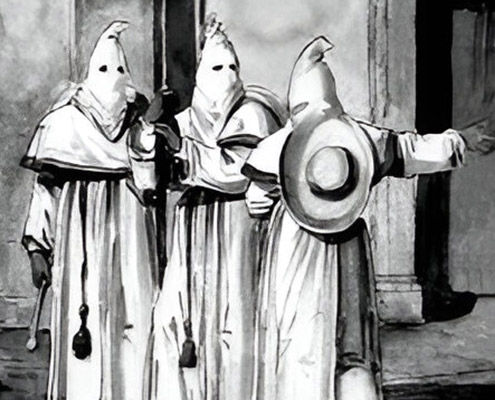
2. The Myth of Colapesce
Another element of Sicilian folklore, deeply rooted in Palermo as well, is the myth of Colapesce. The legend tells of a young fisherman named Cola, who possessed extraordinary swimming and diving abilities, to the point that he could remain underwater for long periods. According to the story, Cola discovered that one of the three columns supporting Sicily was about to collapse, and to save the island from sinking, he decided to replace the column, remaining underwater forever to hold up the land.
This myth, embodying sacrifice and dedication, symbolizes both the fragility and resilience of Sicily, an island that, like Colapesce, is always ready to bear the weight of adversity to remain stable and whole. In Palermo, the myth of Colapesce is still deeply felt, especially among fishermen and coastal communities, who see him as a symbol of strength and protection.
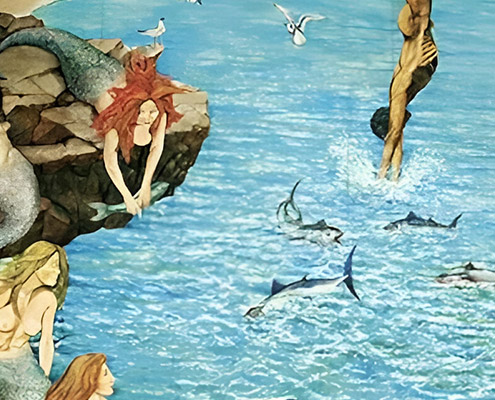
3. The Genius of Palermo: Secular and Mysterious Protector
The Genius of Palermo, which we have discussed in detail in a previous article, is a deeply symbolic figure representing the secular soul of the city. This ancient tutelary deity, depicted as a bearded man with a snake feeding from his chest, is surrounded by an aura of mystery and veneration.
The Genius is a symbol of protection and wisdom, but also of historical continuity, embodying the city’s identity across the centuries. Unlike saints, who belong to the religious sphere, the Genius is a “pagan” protector, tied to ancient cults and rites that still survive in Palermo’s folklore today.
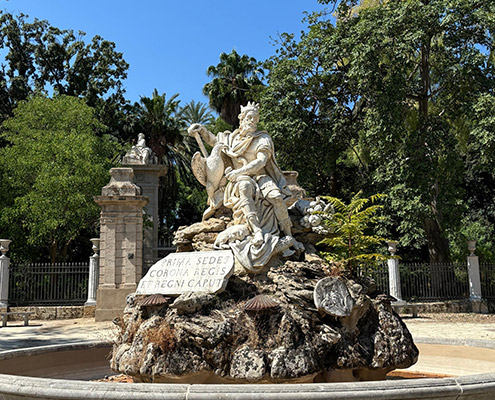
4. The Walls of the Cattive: Symbol of Segregation and Sorrow
The Walls of the Cattive, located along the Foro Italico, are a controversial and mysterious symbol of Palermo. This elevated walkway, built along the ancient city walls, was reserved for the “cattive” – a Sicilian term for widows. These women, who were denied participation in social life, could observe the city from above without being seen.
The Walls of the Cattive represent a place of sorrow and segregation, but also a symbol of the condition of women in ancient Palermo, where rigid social conventions imposed a secluded existence on widows. This place, steeped in sadness and melancholy, is now an important testimony to the city’s history, but also a symbol of the strength and resilience of Palermo’s women.
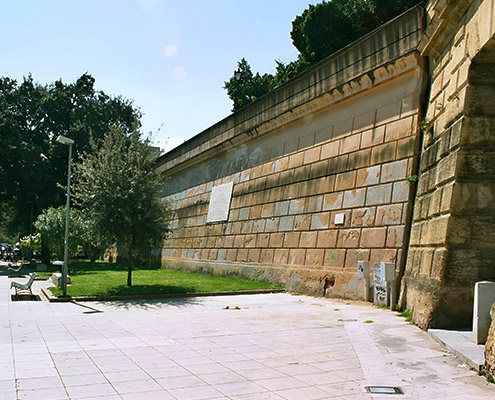
5. The Capuchin Catacombs: A Journey Among the Dead
One of Palermo’s most mysterious and eerie places is the Capuchin Catacombs, an ancient underground cemetery located beneath the Capuchin convent. Here, since the 16th century, monks, nobles, and notable citizens have been buried, their bodies mummified and arranged along the catacomb walls.
The Catacombs house the remains of about 8,000 people, preserved in an astonishing state thanks to the specific climatic conditions and mummification techniques used. Among the most famous mummies is that of Rosalia Lombardo, a two-year-old girl who died in 1920, whose mummy is so well-preserved that she appears to still be alive.
This place, both fascinating and macabre, represents a journey through time and into Palermo’s historic culture of death, where the veneration of the dead was an integral part of daily life.
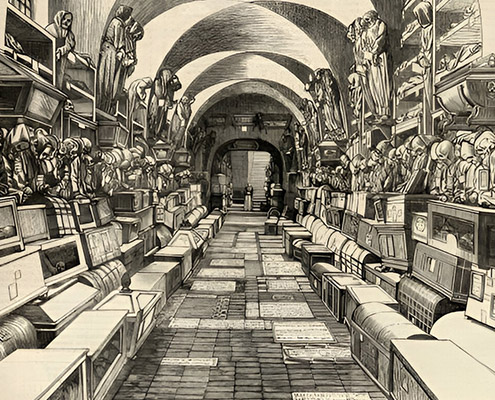
6. The Festino of Santa Rosalia: Between Devotion and Folklore
The Festino of Santa Rosalia, celebrated every July, is one of Palermo’s most important and heartfelt events. However, behind the religious devotion lies a rich heritage of symbolism and rituals deeply rooted in ancient folklore.
Santa Rosalia, the patron saint of Palermo, is venerated as the saint who saved the city from the plague in 1624. The Festino, with its spectacular procession through the historic center, is an event that blends faith, tradition, and symbolism. During the festival, the statue of the saint is carried in procession on a triumphal cart, followed by a festive and devout crowd.
Beyond the religious celebration, the Festino is also a moment of strong civic identity, an occasion when the people of Palermo come together to celebrate not only their patron saint but also their shared history and roots. The Festino is a time when the sacred and the profane meet, creating a unique and evocative atmosphere.
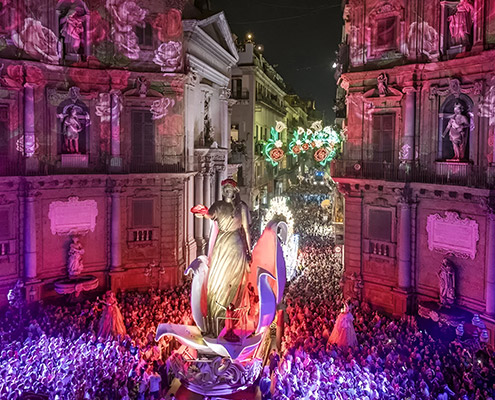
7. The Mysteries of the Vucciria
The Vucciria, one of Palermo’s historic markets, is a place steeped in history and mystery. By day, the Vucciria is a lively and chaotic market, where fish, meat, fruits, and vegetables are sold. By night, however, it transforms into a gathering point for Palermo’s nightlife, but also a place filled with stories and legends.
According to some accounts, the Vucciria is haunted by spirits and ghosts, restless souls wandering among the empty stalls and narrow streets. One of the most famous legends is that of a young woman’s ghost, killed for love, who is said to appear near the market on the darkest nights.
The Vucciria is a place where the line between reality and imagination is thin, a place where popular folklore blends with daily life, creating a unique and fascinating atmosphere.
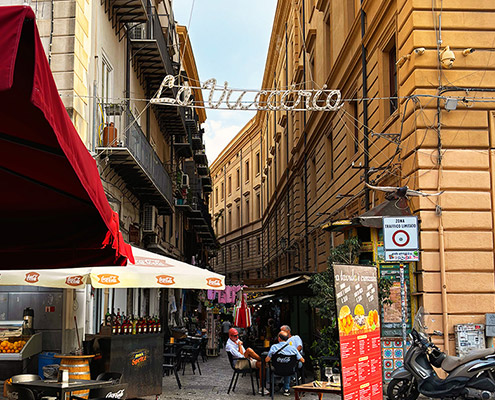
Conclusion
Palermo is a city that fascinates not only for its artistic and architectural beauty but also for its mysteries, folklore, and symbolism. From the Genius of Palermo to the Beati Paoli, from the Capuchin Catacombs to the Walls of the Cattive, the city is a web of stories, myths, and legends that define its deep identity.

